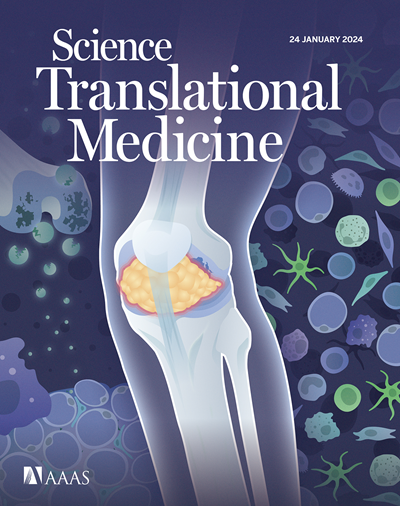Delineating epileptogenic networks using brain imaging data and personalized modeling in drug-resistant epilepsy
IF 15.8
1区 医学
Q1 CELL BIOLOGY
引用次数: 19
Abstract
Precise estimates of epileptogenic zone networks (EZNs) are crucial for planning intervention strategies to treat drug-resistant focal epilepsy. Here, we present the virtual epileptic patient (VEP), a workflow that uses personalized brain models and machine learning methods to estimate EZNs and to aid surgical strategies. The structural scaffold of the patient-specific whole-brain network model is constructed from anatomical T1 and diffusion-weighted magnetic resonance imaging. Each network node is equipped with a mathematical dynamical model to simulate seizure activity. Bayesian inference methods sample and optimize key parameters of the personalized model using functional stereoelectroencephalography recordings of patients’ seizures. These key parameters together with their personalized model determine a given patient’s EZN. Personalized models were further used to predict the outcome of surgical intervention using virtual surgeries. We evaluated the VEP workflow retrospectively using 53 patients with drug-resistant focal epilepsy. VEPs reproduced the clinically defined EZNs with a precision of 0.6, where the physical distance between epileptogenic regions identified by VEP and the clinically defined EZNs was small. Compared with the resected brain regions of 25 patients who underwent surgery, VEP showed lower false discovery rates in seizure-free patients (mean, 0.028) than in non–seizure-free patients (mean, 0.407). VEP is now being evaluated in an ongoing clinical trial (EPINOV) with an expected 356 prospective patients with epilepsy.
利用脑成像数据和个性化建模划分耐药性癫痫的致痫网络
精确估算致痫区网络(EZN)对于规划治疗耐药性局灶性癫痫的干预策略至关重要。在这里,我们介绍了虚拟癫痫患者(VEP),这是一种利用个性化脑模型和机器学习方法估算致痫区网络并辅助手术策略的工作流程。患者特异性全脑网络模型的结构支架是通过解剖学 T1 和扩散加权磁共振成像构建的。每个网络节点都配有一个数学动态模型,用于模拟癫痫发作活动。贝叶斯推理方法利用患者癫痫发作的功能立体脑电图记录对个性化模型的关键参数进行采样和优化。这些关键参数及其个性化模型决定了特定患者的 EZN。个性化模型还被进一步用于利用虚拟手术预测手术干预的结果。我们利用 53 名耐药性局灶性癫痫患者对 VEP 工作流程进行了回顾性评估。VEP再现了临床定义的EZN,精确度为0.6,其中VEP确定的致痫区与临床定义的EZN之间的物理距离很小。与 25 名接受手术的患者切除的脑区相比,VEP 在无癫痫发作患者中的错误发现率(平均为 0.028)低于在无癫痫发作患者中的错误发现率(平均为 0.407)。目前正在进行的一项临床试验(EPINOV)正在对 VEP 进行评估,预计将有 356 名癫痫患者接受该试验。
本文章由计算机程序翻译,如有差异,请以英文原文为准。
求助全文
约1分钟内获得全文
求助全文
来源期刊

Science Translational Medicine
CELL BIOLOGY-MEDICINE, RESEARCH & EXPERIMENTAL
CiteScore
26.70
自引率
1.20%
发文量
309
审稿时长
1.7 months
期刊介绍:
Science Translational Medicine is an online journal that focuses on publishing research at the intersection of science, engineering, and medicine. The goal of the journal is to promote human health by providing a platform for researchers from various disciplines to communicate their latest advancements in biomedical, translational, and clinical research.
The journal aims to address the slow translation of scientific knowledge into effective treatments and health measures. It publishes articles that fill the knowledge gaps between preclinical research and medical applications, with a focus on accelerating the translation of knowledge into new ways of preventing, diagnosing, and treating human diseases.
The scope of Science Translational Medicine includes various areas such as cardiovascular disease, immunology/vaccines, metabolism/diabetes/obesity, neuroscience/neurology/psychiatry, cancer, infectious diseases, policy, behavior, bioengineering, chemical genomics/drug discovery, imaging, applied physical sciences, medical nanotechnology, drug delivery, biomarkers, gene therapy/regenerative medicine, toxicology and pharmacokinetics, data mining, cell culture, animal and human studies, medical informatics, and other interdisciplinary approaches to medicine.
The target audience of the journal includes researchers and management in academia, government, and the biotechnology and pharmaceutical industries. It is also relevant to physician scientists, regulators, policy makers, investors, business developers, and funding agencies.
 求助内容:
求助内容: 应助结果提醒方式:
应助结果提醒方式:


